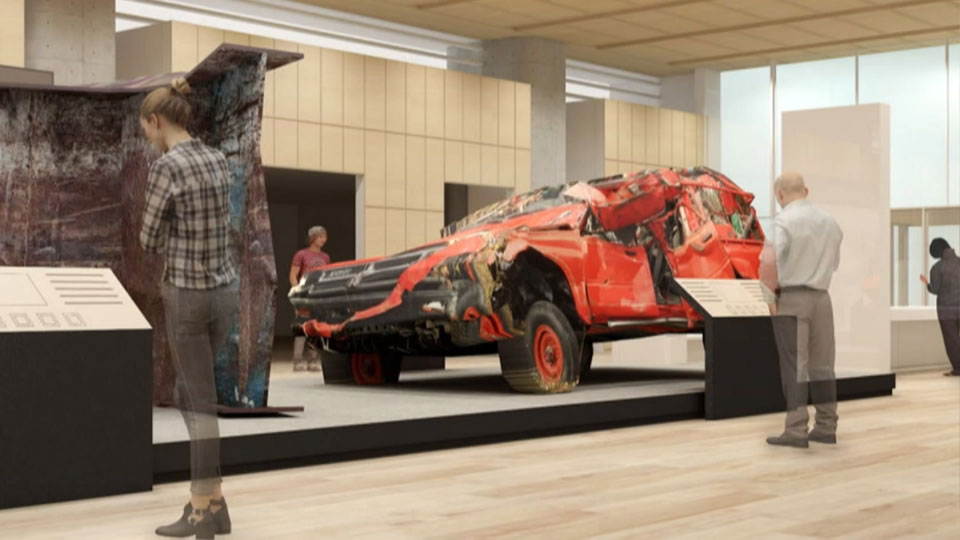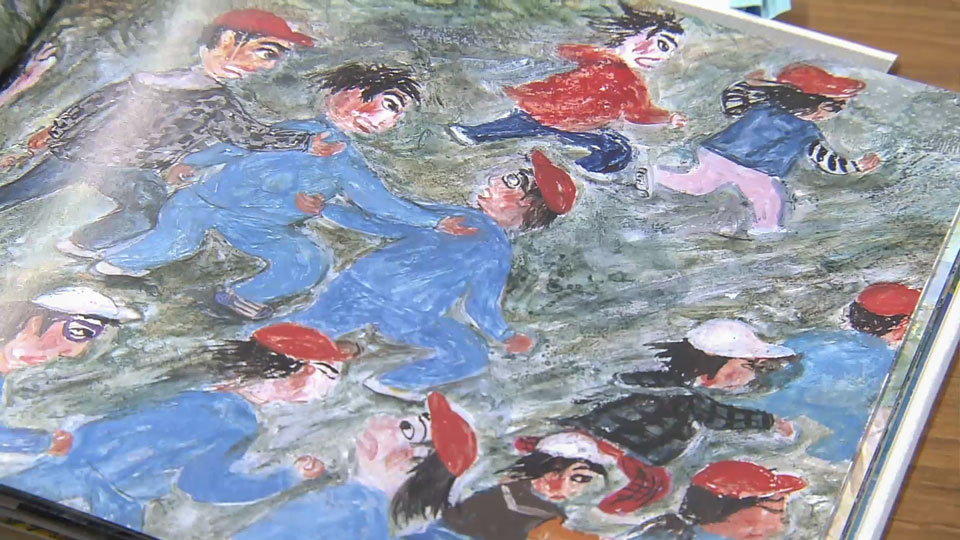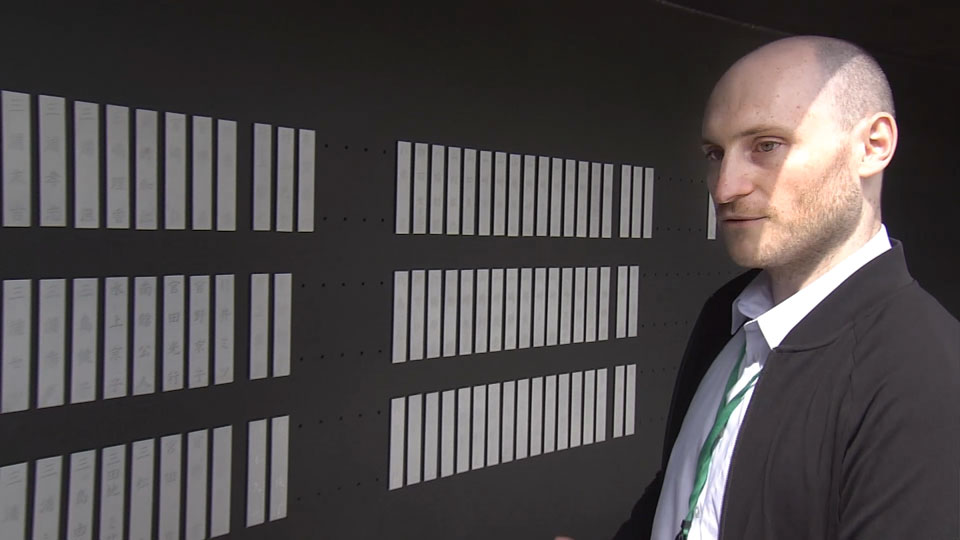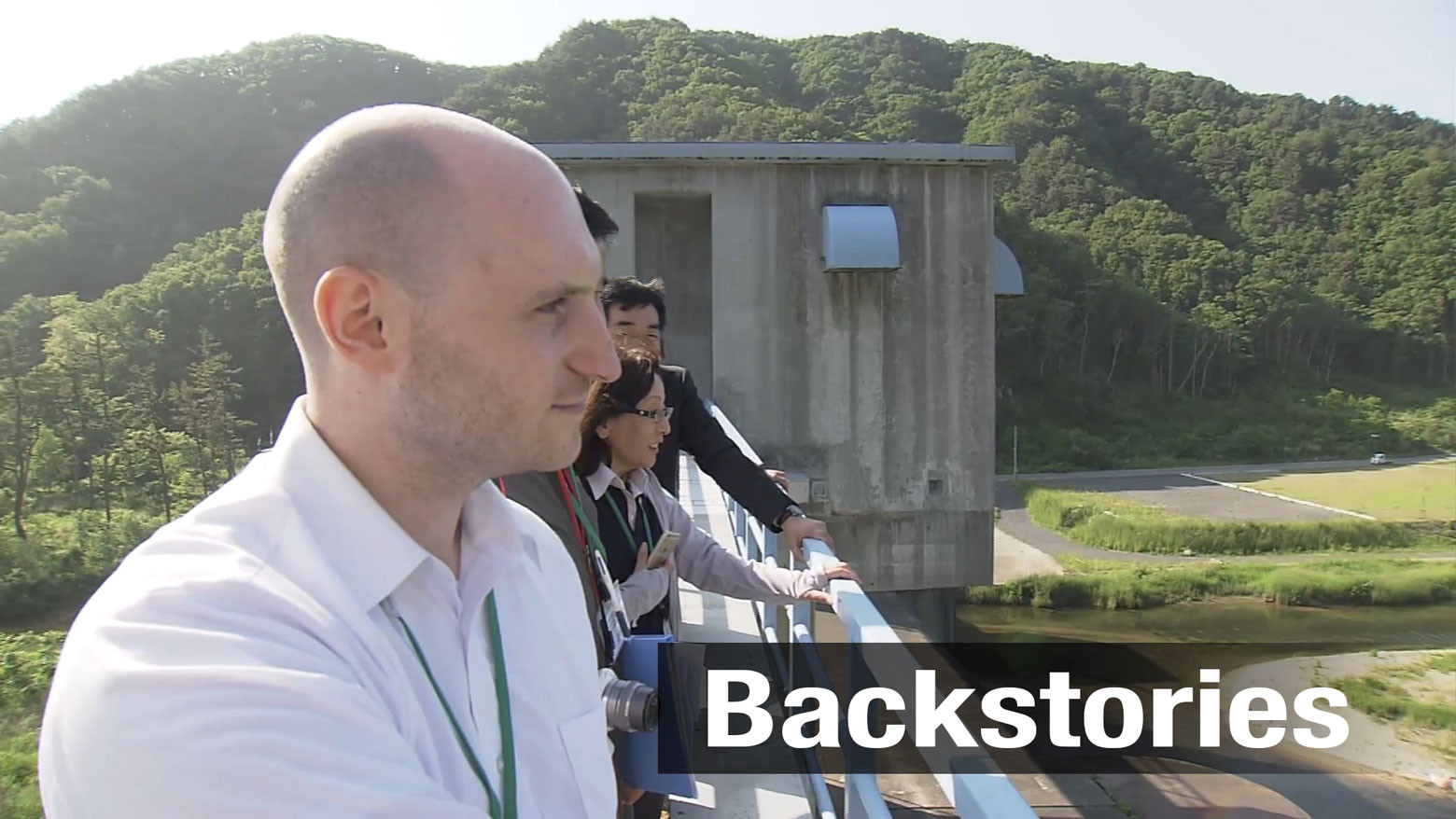Preparing to open
The museum on the earthquake and tsunami is still being constructed. Exhibits will include objects such as the structural remains of a fire truck that the tsunami destroyed.

The prefecture is training eight guides for the museum. An American man, Zachary Paul Casselman, is among them. He moved to Kamaishi City in the prefecture in 2018 with his wife. She works as a Coordinator for International Relations in the city. He was inspired to apply after hearing the stories of survivors.
Casselman is learning all about the history of the city and about the disaster in order to share it with visitors in English.
To learn about the disaster, Casselman visited a coastal area with guides. He also spoke to a firefighter who responded to the disaster. The firefighter said, "I saw a pure white tsunami over there. Its highest point was 23.6 meters." Casselman said, "It's hard to imagine. It's very difficult to fathom that there was a wall of water this high."
Iwate Prefecture official Masamichi Sasaki said, "Most of the guides actually experienced the disaster. I hope they will talk about their personal experiences during their tours."
A book for children tells universal lessons

While learning about the disaster, Casselman came across a picture book called "Tsunami-Tendenko."
The book tells the story of elementary school students from the area who fled the tsunami. The title is a slogan for escaping a tsunami meaning you should protect your own life. The book's message is that in case of tsunami, it's crucial to escape as quickly as possible, and that people, even children, should first protect themselves before helping others. This will lead to higher survival rates.
Casselman said this is an important message for everyone. "These lessons are universal. They are not just for Japan.”
Remembering victims, not as numbers
Casselman visited a memorial park set up this spring at a site where more than 160 people are believed to have died. What impressed him there was that the name of each victim was inscribed in a memorial.
Before that, Casselman only knew how many people had died. Now he feels strongly that the victims should be known by their names, not as numbers.
Casselman says, "Everyone should be remembered. No one should be just a number. That's an important message I want to pass on.”

The disaster in Iwate is a lesson for humanity. Casselman will convey that message to visitors who can’t speak Japanese but want know more about what happened. The museum is scheduled to open on September 22.

